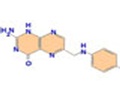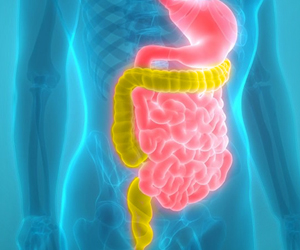A recently conducted study has shown how higher primates like humans, guinea pigs and fruit bats survive the inability to produce vitamin C from glucose.
Researchers from the Universite Montpellier I and II in France report that unlike the more than 4,000 other species of mammals who produce lots of vitamin C, the red blood cells of the handful of vitamin C-defective species are specially equipped to suck up the vitamin’s oxidized form, so-called L-dehydroascorbic acid (DHA).When that DHA, which is immediately transformed back into ascorbic acid or vitamin C, gets inside the blood cells, it can be efficiently carried through the bloodstream to the rest of the body, the researchers add.
'Evolution is amazing. Even though people talk about this as an ‘inborn error’—a metabolic defect that all humans have—there is also this incredible manner in which we’ve responded to the defect, using some of the body’s most plentiful cells,' said lead author Naomi Taylor, noting that the body harbours billions of red blood cells.
'[Through evolution], we’ve created this system that takes out the oxidized form of vitamin C and transports the essential, antioxidant form,' she added.
Meanwhile, the red cells of other mammals apparently take up very little, if any, DHA, which might explain why they need to produce so much more vitamin C than we need to get from our diets, Taylor said.
The recommended daily dose of vitamin C for humans is just one mg/kg, while goats, for example, produce the vitamin at a striking rate of 200 mg/kg each day.
Advertisement
She added that though earlier studies had described the recycling process, their 'contribution to the whole story is to show that this process of recycling exists specifically in mammals that don’t make vitamin C.'
Advertisement
But, in the new study, Taylor’s group made a surprising discovery. They found that the Glut1 on human red blood cells strongly favors DHA over glucose. In fact, the human blood cells are known to carry more Glut1 than any other cell type, harbouring more than 200,000 molecules on the surface of every cell.
Nevertheless, the researchers found, as red blood cells develop in the bone marrow, their transport of glucose declines even as Glut1 numbers skyrocket.
The key to the glucose transporters switch to DHA, they show, is the presence of another membrane protein called stomatin.
They report that accordingly, in patients with a rare genetic disorder of red cell membrane permeability in which stomatin is only present at low levels, DHA transport is decreased by 50 percent while glucose uptake is significantly increased.
The researchers also found that the red cells of mice, a species that can produce vitamin C, don’t carry Glut1 on their red blood cells at all. They carry Glut4 instead. They suspected that the differences in human red blood cells might be linked to our inability to synthesize the reduced form of DHA, vitamin C, from glucose.
In fact, they confirmed Glut1 expression on human, guinea pig and fruit bat red blood cells, but not on any other mammalian red cells tested, including rabbit, rat, cat, dog and chinchilla. Next, they took a closer look at primates.
Primates belonging to the Haplorrhini suborder (including prosimian tarsiers, new world monkeys, old world monkeys, humans and apes) have lost the ability to synthesize vitamin C, whereas primates in the Strepsirrhini suborder (including lemurs) are reportedly able to produce this vitamin, Taylor explained.
Notably, they detected Glut1 on all tested red blood cells of primates within the higher primate group, including long-tailed macaques, rhesus monkeys, baboons and magot monkeys. In marked contrast, Glut1 was not detected on lemur red blood cells. Moreover, they report, although DHA uptake in human and magot red cells was similar, the level of transport in cells from three different lemur species was less than 10 percent of that detected in higher primates.
'Red blood cell-specific Glut1 expression and DHA transport are specific traits of the few vitamin C-deficient mammalian species, encompassing only higher primates, guinea pigs and fruit bats,' the researchers concluded.
'Indeed, the red cells of adult mice do not harbor Glut1 and do not transport DHA. Rather, Glut4 is expressed on their cells. Thus, the concomitant induction of Glut1 and stomatin during red blood cell differentiation constitutes a compensatory mechanism in mammals that are unable to synthesize the essential ascorbic acid metabolite, otherwise known as vitamin C,' they added.
The study is published in the March 21st issue of Cell, a publication of Cell Press.
Source-ANI
KAV/L











